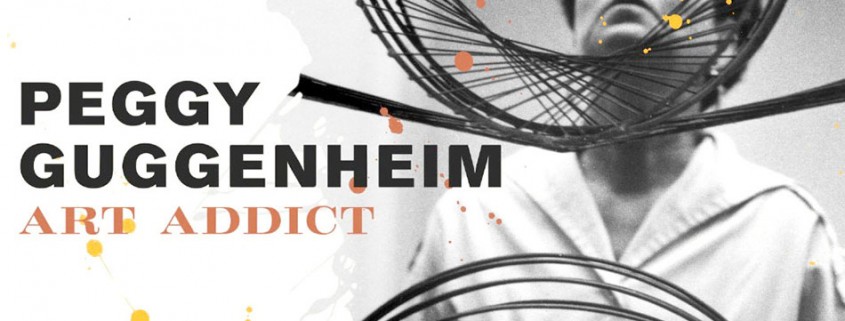Peggy Guggenheim: Art Addict explores collector’s complex life
Collector and socialite Peggy Guggenheim was one of the most polarizing figures in the art world. The documentary Peggy Guggenheim: Art Addict, out Nov. 6 in Los Angeles, is a comprehensive look at her life.
The film is directed by Lisa Immordino Vreeland, who majored in art history and began her career in fashion. Vreeland’s first documentary, the well-received Diana Vreeland: The Eye Has to Travel, was centered on her grandmother-in-law, an esteemed fashion editor. Vreeland’s take on Guggenheim is just as slick and visually pleasing. The film is sprinkled with Pollock-esque backgrounds and peppered with paintings and photographs. There’s a strong sense of style that is consistent in Vreeland’s work.
Vreeland isn’t the only master in her field — Peggy Guggenheim: Art Addict is produced by Stanley Buchthal, who has a wealth of experience in art documentaries, having worked on films about artists such as Robert Mapplethorpe, Jean-Michel Basquiat, Marina Abramovic and Yayoi Kusama. This documentary has already been selected to screen at prestigious festivals such as Tribeca, AFI and Telluride.
When she set out to make the film, Vreeland optioned the Jacqueline Bogard Weld’s book, Peggy: The Wayward Guggenheim, the only authorized biography of Guggenheim. Unfortunately, Weld had lost two summers worth of interview tapes with Guggenheim, but Vreeland unearthed them in Weld’s apartment by an unexpected stroke of luck. Thus it is Peggy Guggenheim’s voice that brackets the film, giving her own voice to her documentary rather than just having others pick her life apart. Vreeland does make the observation that Guggenheim’s voice often comes tonelessly because it was difficult for her to answer many of the questions.
Vreeland also assembled a variety of key experts, such as John Richardson, the definitive Picasso biographer, to act as a prominent speaker in the film. In addition to Richardson, Vreeland also spoke to contemporary figures on the art scene, including Marina Abramovic, an acclaimed Serbian performance artist, Jeffrey Deitch, an American art dealer and curator, and Larry Gagosian, an American art dealer who owns the Gagosian Gallery chain of art galleries.
The Guggenheims made their fortune in mining, but Peggy Guggenheim’s personal life was mired in tragedy. After her father died in the Titanic’s sinking and her sister passed away, Guggenheim’s view on life was irrevocably changed. Her attachment to the tragedy and outsider status of art allowed her to be so cutting-edge in her taste. Though originally Renaissance art piqued her interest at a young age, the artists that she would support and make famous, most notably Jackson Pollock and William Congdon, were outsiders. The documentary made it apparent that she was also an outsider in the luxurious world in which she was raised. Throughout World War II, Guggenheim traveled through many countries alone collecting art, identifying with creators who felt they did not conform.
In New York, Guggenheim shattered the conventions of exhibition space by abandoning the sterile blank boxes. There were multi-use chairs designed by Frederick Kiesler. She also made the gallery out of her personal space, opening her home in Venice to share her collection. Richardson uses the word “pollinator” to describe Guggenheim because being in a community of artists invigorated her to inspire other people.
Another frequently discussed topic in the film is Guggenheim’s private life, as it connects to her work. She was someone for whom “sex and art … went hand in hand,” apparent in her choice of partners — Samuel Beckett, Yves Tanguy, Marcel Duchamp and her eventual spouse, Max Ernst.
However, one shouldn’t define Guggenheim by the men she made famous, though the film postulates that the art world is still dominated by men. With this documentary, one can hope that it might spark the interest of young people, particularly women. Guggenheim stepped outside her comfort zone and the confines of her family to stand her own ground. Her fearlessness is what comes across in the film.

